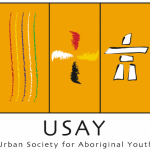Reel Injun: On the Trail of the Hollywood Indian
Reel Injun: On the Trail of the Hollywood Indian (http://www.reelinjunthemovie.com)
Watch Reel Injun – Trailer on PBS.
Description:
“What does it mean to have your identity defined by the movies?” This question is posed during the Trailer of the movie. I identified with this question because of the topic in our course concerning whether or not you need to understand your own culture before you can identify with another. I suspect it is the same with your “identity”.
The movie is a documentary film by Cree filmmaker Neil Diamond. Diamond takes a journey through the Americas to see how “the myth of “the Injun” has influenced the world’s understanding — and misunderstanding — of Natives.” It has won several awards including the 2011 Peabody Award for excellence in electronic media. I have to admit I have not seen the movie. Only 3 or 4, 2-3 minute clips but I am exploring ways to see it. What I have seen is both interesting and humorous. I say humorous because one clip shows a montage of Hollywood actors that have portrayed Indians in films and they were all “white”. Maybe it is insensitive to laugh but I was laughing because of the “patheticness” of Hollywood’s attempts – not that I think it was funny. If anyone has access to this movie I would love to see it in its entirety.
~ Ryan
November 28, 2011 No Comments
Our Mother Tongues
Our Mother Tongues (http://ourmothertongues.org/Home.aspx)
Description:
I came across Our Mother Tongues while researching the movie March Point. What I liked about this site is that they claim that there is a “vibrant cultural revival” in Native Indian culture – a message that (at least too me) is very different from what is portrayed in mainstream media. Its focus is on the USA and has many interesting aspects to its website.
There is an interactive language map whereby you click on a region and a pop-up window displays information about that region including audio files of people speaking the Mother Tongue of that region. You can send ePostcards with an audio message greeting in a chosen Tribal language. As well, there are videos and a blog that you can subscribe to.
~ Ryan
November 28, 2011 No Comments
USAY
USAY (http://www.usay.ca/)
Description:
I discovered USAY when I was researching New Tribe Magazine. USAY is a non-profit organization in Calgary and been in existence since 2001. “USAY strives to provide essential programming and services to Calgary’s Aboriginal youth between the ages of twelve and twenty-nine.” Taken from their website, their mission statement is:
The Urban Society for Aboriginal Youth (USAY) will enrich the lives of all urban Aboriginal youth by nurturing self-empowerment and fostering healthy collaboration and communication to ensure healthy future generations.
USAY provides many programs for Aboriginal youth will includes but is not limited to:
- New Tribe Magazine
- Aboriginal Anti-Racism Movement
- New Kicks 4 Kids (in partnership with Nike Canada)
- Career Planning
- Personal Finance courses
All of the board of directors of USAY must be under the age of 30 so that they have a better understanding of the issue that are affecting Aboriginal youth.
~ Ryan
November 28, 2011 No Comments
New Tribe Magazine
New Tribe Magazine (http://www.usay.ca/services/new_tribe)
Description:
New Tribe is a monthly magazine published in Calgary, Alberta. They aspire to be the “voice” of urban Aboriginal Youth focusing on the communities surrounding the Calgary area. Similar to SAY Magazine, New Tribe hopes to inspire Aboriginal youth through their stories and encourage Aboriginal youth to not only read their magazine but contribute to it as well. To subscribe to New Tribe magazine you can sign up on their website to be part of their mailing list. Magazines are distributed to several locations around the city and one is also able to view current and past issue on their website.
~ Ryan
November 28, 2011 No Comments
SAY Magazine
Say Magazine (http://www.saymag.com/)
Description:
SAY Magazine is a quarterly-published magazine “dedicated to recognizing American Indian, Alaska Natives, Native Hawaiians, First Nation, Metis and Inuit achievement and includes information on economic development, education, entertainment, sports and health.” Through stories, profiles and imagery, SAY Magazine hopes to inspire those that read their magazine. They claim to be the number one magazine and their target audience is Native Youth. SAY Magazine also has an App for the iPhone and iPad and is available on iTunes. Issues (past and present) are available on their website.
~ Ryan
November 28, 2011 No Comments
Plugged in: Remote Australian Indigenous Youth and Digital Culture
Plugged in: Remote Australian Indigenous Youth and Digital Culture
(http://caepr.anu.edu.au/sites/default/files/Publications/WP/WP69_0.pdf)
Description:
Plugged in: Remote Australian Indigenous Youth and Digital Culture is a paper put out by the Centre for Aboriginal Economic Policy Research at the Australian National University. In this paper there are themes and examples in which Indigenous youth have utilized digital technologies thus creating a sense of “fitting in” to the globalised youth culture. The paper also discusses how technology is allowing Indigenous youth in remote regions of Australia to acquire new skills and new roles in their communities. The apparent overtone of the paper is positive with respect to Indigenous youth and the use of digital technology.
~ Ryan
November 7, 2011 No Comments
Information Technology and Indigenous People
Information Technology and Indigenous People
Description:
Information Technology and Indigenous People is a book by Laurel Evelyn Dyson, Max A. N. Hendriks and Stephen Grant. All three are from the University of Technology in Sydney, Australia.
One particular section that I found worthwhile is Section II on Technology in Education. In this section it talks about how Indigenous people are using CD-ROMs to preserve the rich cultural history of story-telling. Technology is providing them the opportunity to not only preserve this part of their history and culture but also preserve it the voice of their elders. Preserving the stories on CD-ROM will allow future generations to share and hear the stories (in some cases) from those of a generation(s) past.
~Ryan
November 7, 2011 No Comments
Bridging Canada’s Digital Divide: First Nations’ Access to New Information Technologies
Bridging Canada’s Digital Divide: First Nations’ Access to New Information Technologies
(http://www2.brandonu.ca/library/cjns/21.2/cjnsv21no2_pg191-215.pdf)
Description:
In this paper, Marian Bredin discusses ways in which the digital divide between FN people and other Canadians (many of which live in the areas and communities digital networks were designed to serve) can be bridged.
Her paper is organized into 3 sections:
- i. Critical tools for thinking about the digital divide
- ii. Current Canadian debates on access
- iii. Successful Native initiatives in bridging the divide
~ Ryan
November 7, 2011 No Comments
First Nations students need Internet technology, advocates say
First Nations students need Internet technology, advocates say
(http://www.straight.com/article-254208/first-nations-kids-need-net)
Click the above image to link to YOUTUBE to watch the interview
Description:
This is a story that I came across on the straight.com on Denise Williams (a member of the Cowichan Tribe) who is a youth initiative officer for the First Nations Education Steering Committee. Williams believes that broadband internet access will aid the FN in BC by expanding opportunities available to them, many of which live in rural and/or remote reserves. She strongly feels that having high-speed internet will greatly improve the delivery of distance education where numbers, distance and proximity make delivery of education very expensive.
~ Ryan
November 7, 2011 No Comments
Our Voices, Our Stories: First Nations, Métis and Inuit Stories
Our Voices, Our Stories: First Nations, Métis and Inuit Stories
(http://www.collectionscanada.gc.ca/stories/index-e.html)
Description:
I came across this link on the Saskatchewan Teachers Federation Website. It is a link to the Library and Archives of Canada (government) website. It is a collection of work, “celebrating stories from the oral tradition of the Inuit, Métis and First Nations peoples, from the past to the present.”
At first I was skeptical of this Canadian Government Website but I learned that members from the Inuit, Métis and First Nations communities participated in this project so I want to assume that the stories are authentic and not “stolen” or “misrepresented”.
The site serves proof that technology can be successfully used to store and share stories from Inuit, Métis and First Nations communities “bearing witness to the cultural diversity, living history and collective knowledge from which they came.” The site also makes reference to the fact the stories on this site represent a very small portion of a vast cultural heritage. This site is a way of continuing the rich history and tradition of storytelling and oral culture via a relatively new medium.
~ Ryan
November 7, 2011 No Comments





